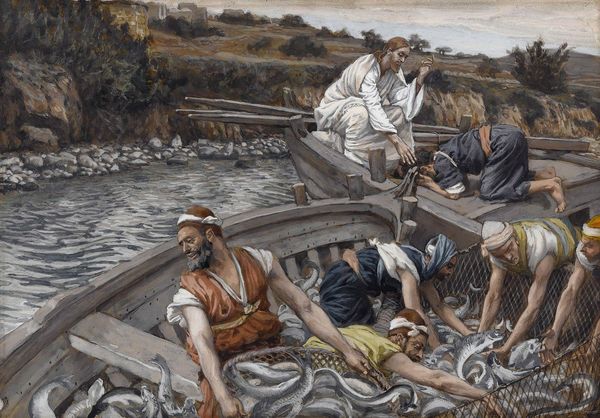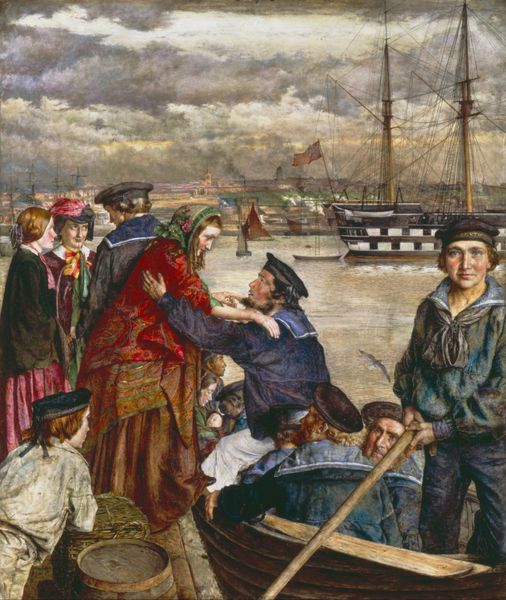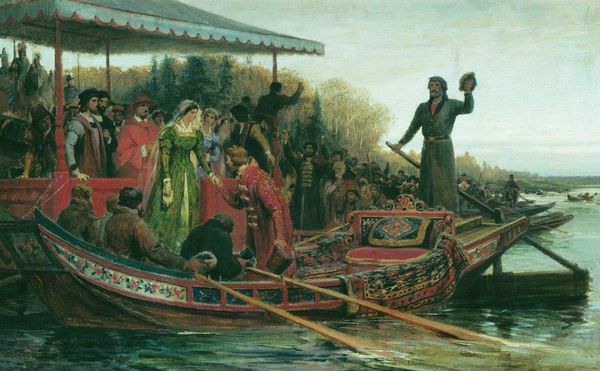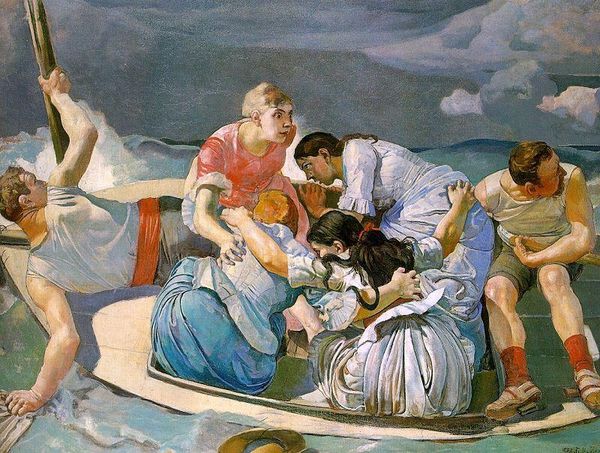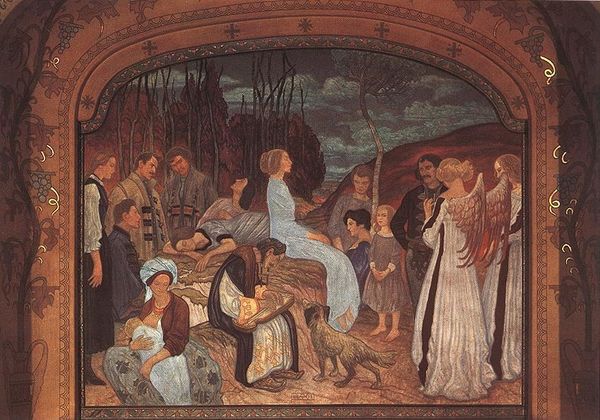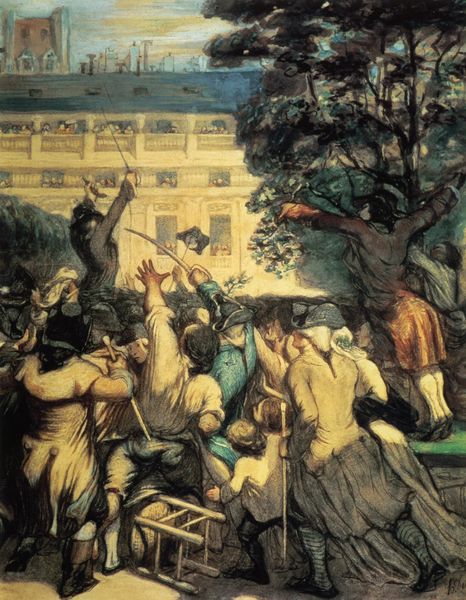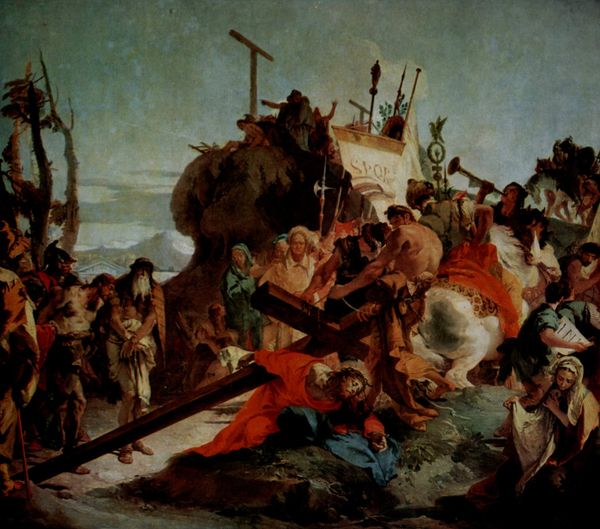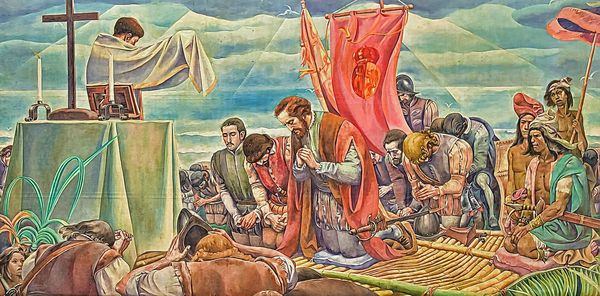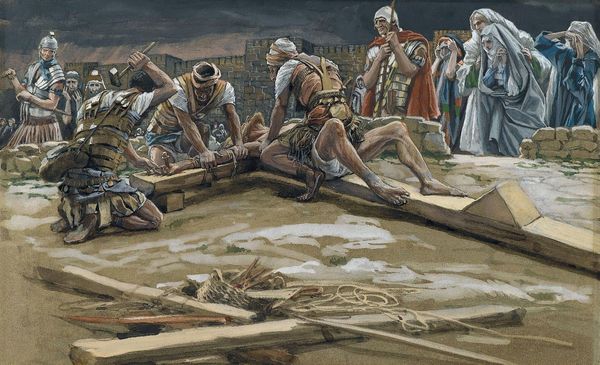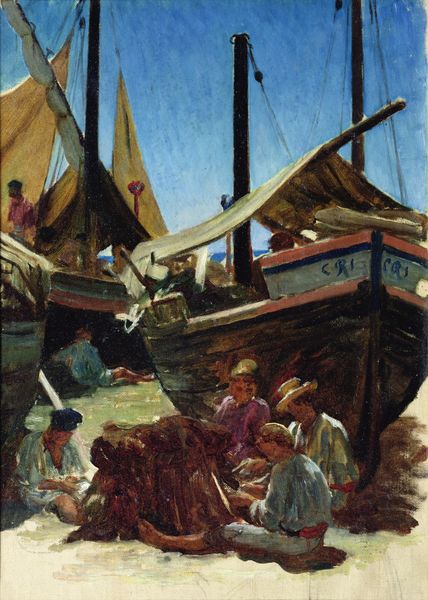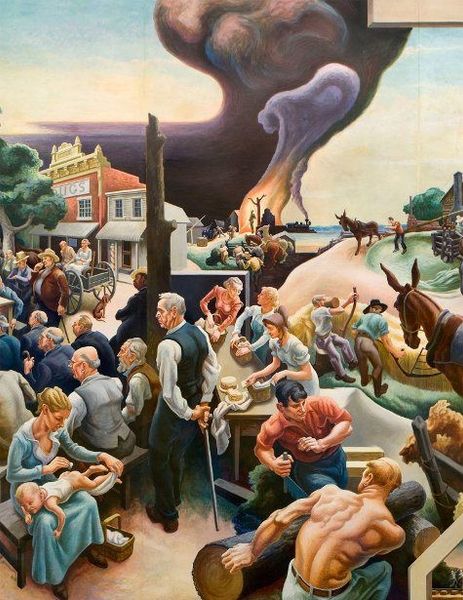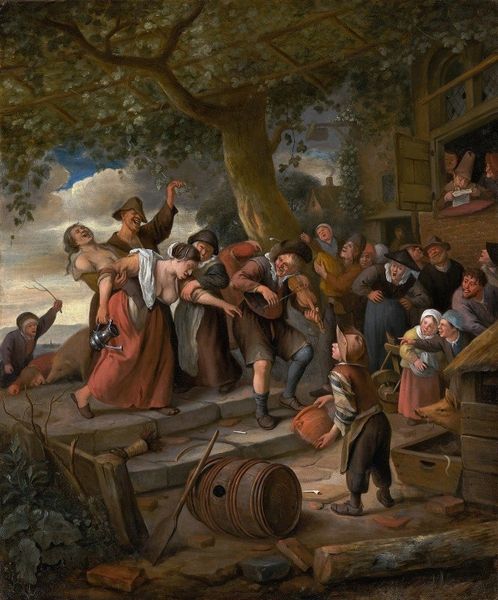
Copyright: Public domain
Editor: This is Akseli Gallen-Kallela’s "The Departure of Väinämöinen," painted in 1906. The use of oil gives the scene a really otherworldly feeling, almost dreamlike, especially with the ghostly figures in the background. What do you make of the narrative being presented here? Curator: It's tempting to view this solely through a lens of Finnish nationalism, considering Gallen-Kallela’s investment in the Kalevala, Finland's national epic. But what if we consider the image’s positioning of Väinämöinen, the aging hero, departing as a commentary on shifting power dynamics, or even the artist’s own anxieties about artistic relevance in a rapidly changing society? What does his leaving mean in terms of access and privilege for the future generations represented by the children depicted? Editor: That’s an interesting point about anxieties regarding progress and relevance. I hadn’t considered that before. How does Gallen-Kallela's style contribute to these readings? Curator: The Romantic style, with its emphasis on emotion and the power of nature, frames Väinämöinen’s departure as a poignant farewell to a specific way of life. Notice how the figures are both idealized and yet grounded in what looks like everyday clothing. He’s a mythological figure, but also potentially reflective of the displacement that occurred due to rapid industrialisation in Finland. Does that blend resonate with your impression? Editor: Absolutely, that contrast makes him more relatable, more human, despite his legendary status. I now see the piece as less about nationalistic pride and more about grappling with societal transformation. Curator: Precisely. It highlights how artworks, while seemingly rooted in a specific context, also offer avenues for exploring universal themes of identity, loss, and social change. Editor: This makes me appreciate how an image can be understood from very different points of view!
Comments
No comments
Be the first to comment and join the conversation on the ultimate creative platform.
